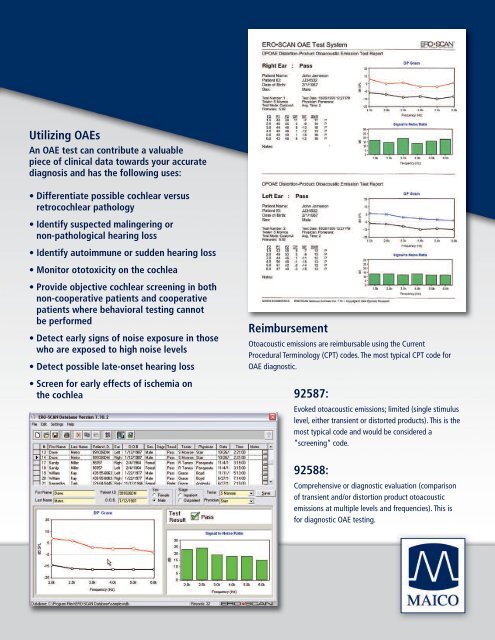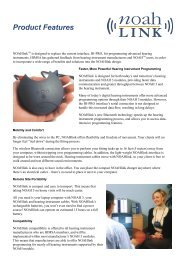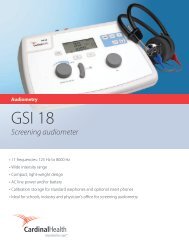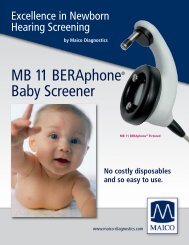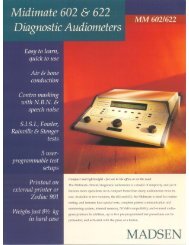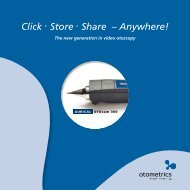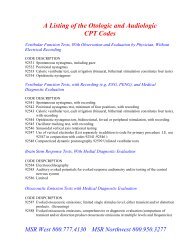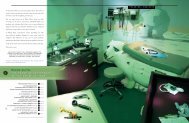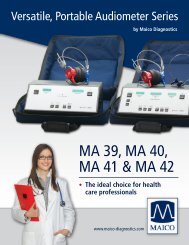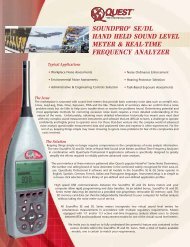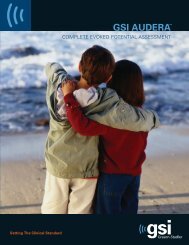ERO•SCAN
Eroâ¢Scan - Maico Diagnostic
Eroâ¢Scan - Maico Diagnostic
- No tags were found...
You also want an ePaper? Increase the reach of your titles
YUMPU automatically turns print PDFs into web optimized ePapers that Google loves.
Utilizing OAEs<br />
An OAE test can contribute a valuable<br />
piece of clinical data towards your accurate<br />
diagnosis and has the following uses:<br />
• Differentiate possible cochlear versus<br />
retrocochlear pathology<br />
• Identify suspected malingering or<br />
non-pathological hearing loss<br />
• Identify autoimmune or sudden hearing loss<br />
• Monitor ototoxicity on the cochlea<br />
• Provide objective cochlear screening in both<br />
non-cooperative patients and cooperative<br />
patients where behavioral testing cannot<br />
be performed<br />
• Detect early signs of noise exposure in those<br />
who are exposed to high noise levels<br />
• Detect possible late-onset hearing loss<br />
• Screen for early effects of ischemia on<br />
the cochlea<br />
Reimbursement<br />
Otoacoustic emissions are reimbursable using the Current<br />
Procedural Terminology (CPT) codes. The most typical CPT code for<br />
OAE diagnostic.<br />
92587:<br />
Evoked otoacoustic emissions; limited (single stimulus<br />
level, either transient or distorted products). This is the<br />
most typical code and would be considered a<br />
“screening” code.<br />
92588:<br />
Comprehensive or diagnostic evaluation (comparison<br />
of transient and/or distortion product otoacoustic<br />
emissions at multiple levels and frequencies). This is<br />
for diagnostic OAE testing.


